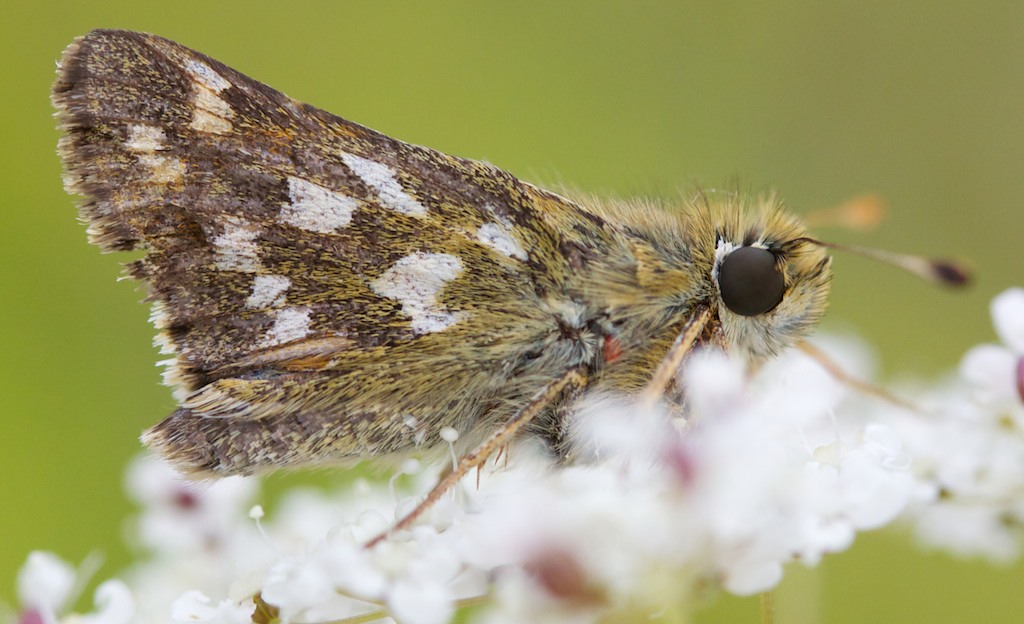Suborder:Glossata Infraorder:Heteroneura Superfamily:Papilionoidea
Wikipedia's taxonomy differs from the RES checklist in placing Hesperiidae in a monotypic superfamily Hesperioidea
Refs: Wikipedia; BBI (Easterbrook); CBG (Tolman & Lewington); RES Checklist (Agassiz et al); UKButterflies
Ocelli and frenulum absent in all Papillionoidea
Hesperiidae differ from other Papilionoidea in three key features:
Rest with wings angled so that forewing and hindwing are in different planes (subfamily: Hesperiinae) or spread (subfamily: Pyrginae)
Mostly drab in colour. Males may have a forewing sex brand; All forewing veins run unbranched from cell to wing margin
Wikipedia's taxonomy differs from the RES checklist in placing Hesperiidae in a monotypic superfamily Hesperioidea
Refs: Wikipedia; BBI (Easterbrook); CBG (Tolman & Lewington); RES Checklist (Agassiz et al); UKButterflies
Ocelli and frenulum absent in all Papillionoidea
Hesperiidae differ from other Papilionoidea in three key features:
- Antennal insertions widely separated (by the width of a compound eye)
- A brush of hairs from antennal base projecting over compound eye
- Hindtibia (usually) with 2 pairs of spurs (only apical pair present in other Papilionoidea)
Rest with wings angled so that forewing and hindwing are in different planes (subfamily: Hesperiinae) or spread (subfamily: Pyrginae)
Mostly drab in colour. Males may have a forewing sex brand; All forewing veins run unbranched from cell to wing margin
Subfamily: Pyrginae (2G 2S)
Subfamily: Heteropterinae (1G 1S)
Subfamily: Hesperiinae (3G 5S)
Thymelicus (3S)








